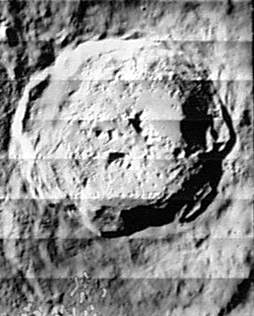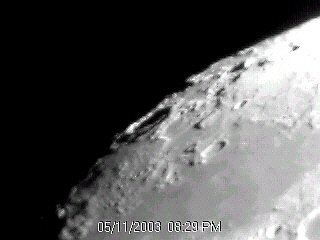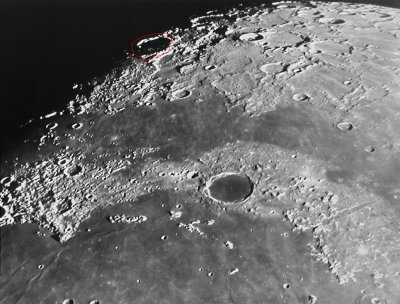 |
PHILOLAUS LUNAR SUNRISE RAY
Observer: Tony Donnangelo
Date/time of observation: 2003/06/10 01:15 U.T.
Site location: Hummelstown RD 3, PA, USA (40.27° N., 76.75° W.)
Site elevation: 362 feet (110 meters)
Site classification: Suburban
Instrument: Takahashi FS-102
Magnification: 91x, 137x, 273x
The evening was almost totally cloudy. At 01:00 U.T., with civil twilight about to end, there was a hole in the clouds. I quickly set my scope up. I observed crater Philolaus for about a minute, when clouds obscured the moon again. Over the next hour, I had approximately two minutes of visibility, and then ended my observing session. I usually wouldn’t attempt observing under those conditions; however, the weather has been horrendous this spring, with very little opportunity to observe. I wanted to make an attempt to see this recently reported ray. Visibility was decent and steady for the few minutes that were available.
Crater Philolaus was prominently illuminated, with the northern exterior wall abutting the terminator. The rim was totally illuminated, except for a section along the western wall. The floor of the crater was in total shadow.
I’m skeptical of the previously reported observation in Philolaus as being a lunar light ray. According to Virtual Moon Atlas, the crater has two symmetrical and separated mountains. The illuminated area inside the crater appeared to be the crest along the length of the southern range. The light beam was broken and ragged with a width that varied greatly along its length, as mountain peaks or a crater wall might appear. The light beam curved northward on the western end, which would follow the contour of the interior mountain. On the most western end, the illumination was broader and oval shaped. This would be consistent with a feature in that area.
|


